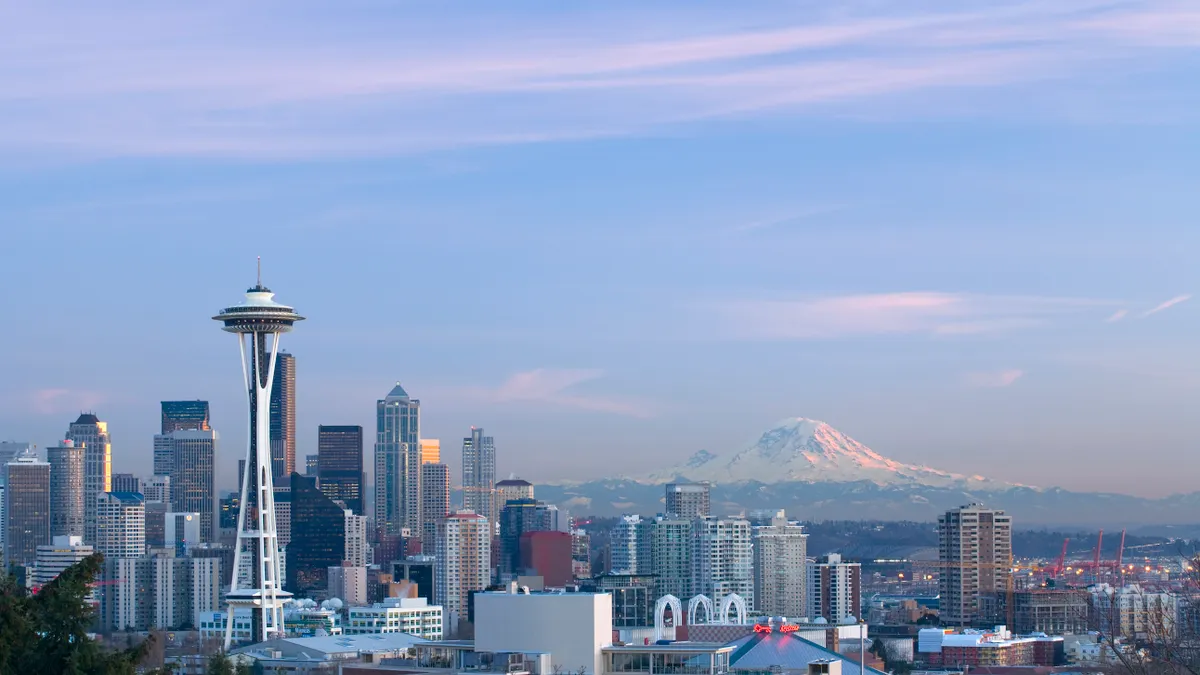Dive Brief:
- Proposed building emissions standards that Seattle Mayor Bruce Harrell unveiled last week would require the city’s large commercial and multifamily buildings to reduce greenhouse gas emissions over the next several decades and achieve net-zero emissions by 2050.
- The standards, nearly two years in the making, are expected to slash annual building sector greenhouse gas emissions by 27% compared with 2008 levels, according to a June 8 news release.
- The legislation is “among the most impactful proposals [the city] can advance to reduce emissions,” Harrell said in a statement.
Dive Insight:
Buildings are a hefty source of climate pollution nationwide, and in Seattle, the sector contributes more than one-third of the city’s total greenhouse gas emissions.
Seattle is one of a slew of U.S. cities — and more recently, states — that require many new buildings to be all-electric. But these policies don’t address existing buildings that burn fossil fuels on site to provide heat, hot water or for other purposes.
An increasing number of states and localities are developing building performance standards that aim to reduce buildings’ carbon footprint by requiring them to meet certain standards. While earlier standards were “virtually all” based on energy use, more recent standards focus on greenhouse gas emissions, said Steven Nadel, executive director of the American Council for an Energy-Efficient Economy.
Washington state regulates energy use in existing buildings through a standard it adopted last year, but that legislation would only reduce Seattle’s building emissions by about 4% by 2030, according to Seattle’s Office of Sustainability and Environment.
The city’s proposed standards are the product of nearly two years of meetings, open houses, webinars and advisory group and specialized task force sessions. Pushback during their development came from environmental groups that want more and faster emission reductions and from real estate and business groups that think the standards should be nixed altogether.
The standards would cover roughly 4,100 buildings, including about 1,885 multifamily buildings and 1,650 nonresidential buildings that are mostly downtown and in dense neighborhoods, according to the Seattle Office of Sustainability and Environment. The proposal offers several pathways for buildings to comply with the standards; owners who do not comply would be fined.
“The policy does not prescribe any particular path,” said Nicole Ballinger, buildings and energy strategic advisor for the Office of Sustainability and Environment, at a June 8 press conference. She recommended that owners first focus on energy-efficiency measures and upgrading to new low-emissions equipment such as heat pumps.
The standard will help Seattle secure federal funding and incentives, proponents of the legislation said in a news release.
The City Council is expected to review the legislation in the fall.











